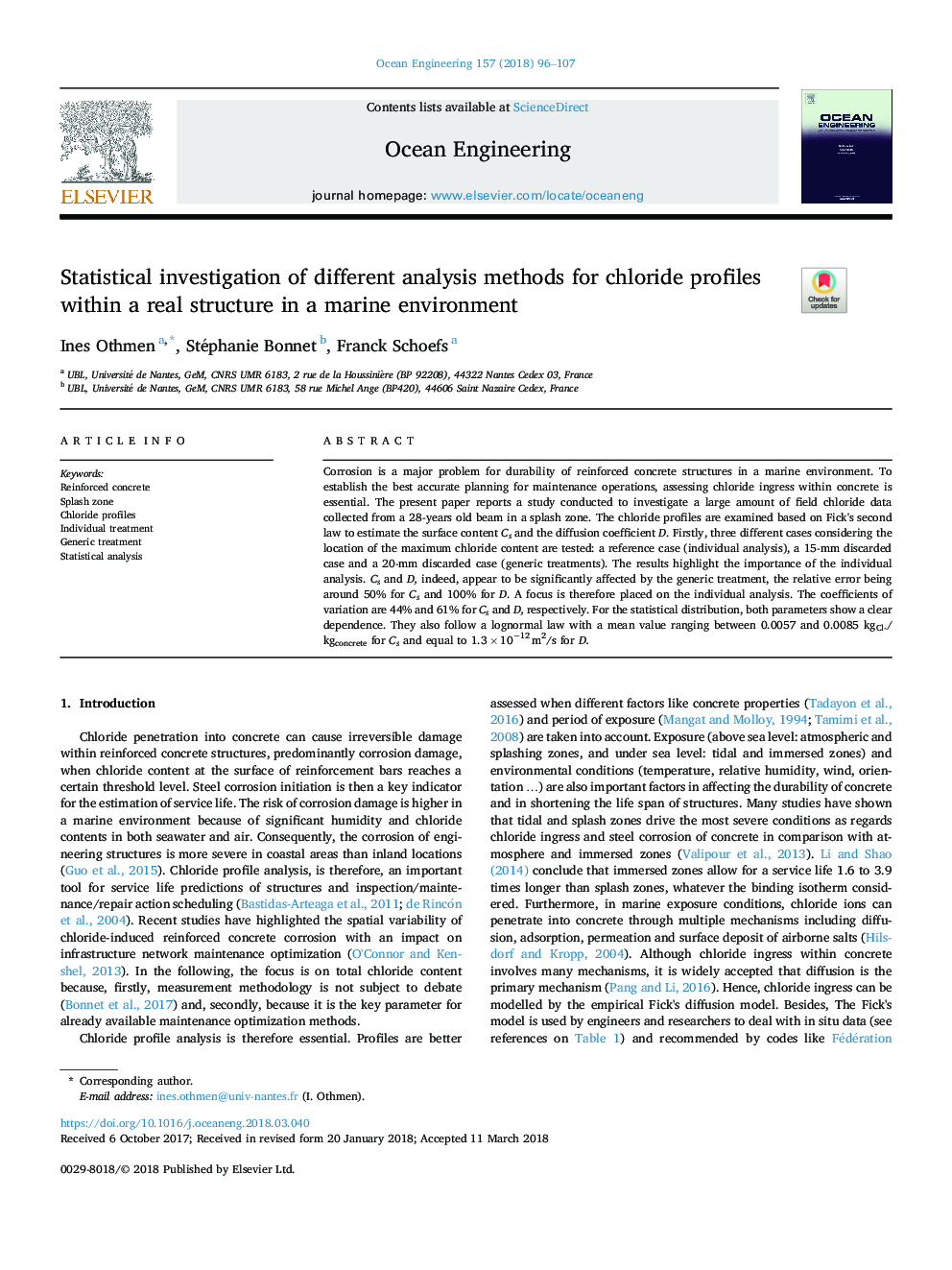| Article ID | Journal | Published Year | Pages | File Type |
|---|---|---|---|---|
| 8062497 | Ocean Engineering | 2018 | 12 Pages |
Abstract
Corrosion is a major problem for durability of reinforced concrete structures in a marine environment. To establish the best accurate planning for maintenance operations, assessing chloride ingress within concrete is essential. The present paper reports a study conducted to investigate a large amount of field chloride data collected from a 28-years old beam in a splash zone. The chloride profiles are examined based on Fick's second law to estimate the surface content Cs and the diffusion coefficient D. Firstly, three different cases considering the location of the maximum chloride content are tested: a reference case (individual analysis), a 15-mm discarded case and a 20-mm discarded case (generic treatments). The results highlight the importance of the individual analysis. Cs and D, indeed, appear to be significantly affected by the generic treatment, the relative error being around 50% for Cs and 100% for D. A focus is therefore placed on the individual analysis. The coefficients of variation are 44% and 61% for Cs and D, respectively. For the statistical distribution, both parameters show a clear dependence. They also follow a lognormal law with a mean value ranging between 0.0057 and 0.0085 kgCl-/kgconcrete for Cs and equal to 1.3â¯Ãâ¯10â12â¯m2/s for D.
Related Topics
Physical Sciences and Engineering
Engineering
Ocean Engineering
Authors
Ines Othmen, Stéphanie Bonnet, Franck Schoefs,
